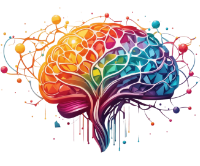Introduction
“Is it wiser to spend hours sharpening your axe, or should you strike while the iron is hot, embracing chaos and uncertainty?”
This provocative question invites us to rethink conventional wisdom about planning and action. In a world teeming with complexity and unpredictability, traditional approaches to decision-making and strategy often fall short. We find ourselves grappling with the metaphors and models that have guided us for so long — particularly the well-known adage of taking the time to “sharpen the axe” before tackling a challenge.
Our journey today weaves through a tapestry of ideas — from the timeless metaphor of axe sharpening, which symbolizes the value of preparation, to the often misattributed Einstein quote about insanity, which challenges repetitive and unyielding methods. We delve into the fascinating realms of chaos theory, a mathematical concept that finds echoes in the unpredictability of human behavior and market dynamics, and the bold, sometimes brash “shoot first, ask questions later” philosophy. This exploration is not just an academic exercise; it’s a quest to find balance and adaptability in our decision-making processes.
The metaphor of sharpening the axe has long stood as a testament to the value of preparation. It suggests that spending time honing our skills, knowledge, and resources can lead to greater efficiency and effectiveness in the long run. But is this always the case? In our rapidly changing world, where opportunities and challenges arise and disappear with unprecedented speed, is there a risk that by the time our axe is sharp enough, the tree we intended to cut may have already fallen or sprouted new branches?
This brings us to the concept of insanity — doing the same thing over and over again and expecting different results. Often misattributed to Einstein, this notion calls into question the effectiveness of rigid, formulaic approaches to problem-solving, especially in dynamic and complex environments. In business and personal life, sticking to a tried and tested method might sometimes blind us to novel solutions and paths less trodden.
As we navigate through these concepts, we’re constantly reminded of the delicate balance required in strategic thinking. How do we prepare adequately without becoming entrenched in our ways? How do we embrace spontaneity and decisiveness without falling prey to recklessness? These are the questions we’ll ponder as we explore the diverse perspectives on strategy and decision-making.
The Axe Metaphor: The Value of Preparation
The metaphor of sharpening the axe, often attributed to Abraham Lincoln, who supposedly said, “Give me six hours to chop down a tree and I will spend the first four sharpening the axe,” offers profound insights into the value of preparation. This metaphor embodies the essence of strategic thinking, emphasizing that the quality and effectiveness of the work we do are significantly enhanced by the time and effort we invest in preparing for it.
Consider the scenario of a lumberjack tasked with felling a giant tree. If they choose to forego sharpening their axe, they’ll likely find themselves exerting more effort, spending more time, and facing greater frustration with each ineffective strike. Conversely, investing time in sharpening the axe may initially delay the commencement of the task, but ultimately leads to a more efficient, effective, and less laborious process.
This principle transcends beyond the physical world of axes and trees into the realms of business, personal development, and virtually any field requiring thoughtful action. In business, for instance, thorough market research, meticulous planning, and comprehensive strategy formulation can be likened to sharpening the axe. These preparatory steps, though time-consuming, lay a solid foundation for success, allowing businesses to navigate markets with precision and effectiveness.
Similarly, in personal growth and learning, the time spent in acquiring knowledge, developing skills, and mental preparation before embarking on a new endeavor ensures a higher likelihood of success. It is the equivalent of sharpening one’s mental axe, preparing the mind to cut through challenges and complexities with greater ease.
However, as we delve deeper into this metaphor, it’s crucial to recognize that preparation, while invaluable, must be balanced with action. Over-sharpening the axe, so to speak, can lead to analysis paralysis, where excessive planning and preparation hinder timely action. This brings us to a critical question: How do we strike the right balance between adequate preparation and decisive action? The answer lies in understanding the context, assessing the situation, and aligning our strategies accordingly.

Challenging the Norm: What is Insanity in Decision Making?
“Insanity is doing the same thing over and over again and expecting different results.” This quote, often misattributed to Albert Einstein, serves as a powerful lens through which we can examine decision-making in both business and personal contexts. Its core message is simple yet profound: the perils of being trapped in a cycle of repetition without adaptation or innovation.
In the realm of business, this concept of insanity takes on a particularly stark relevance. Markets evolve, consumer preferences shift, and new technologies emerge. Companies that cling to outdated models or strategies, expecting continued success, may find themselves in a quagmire of ineffectiveness. The rapidly changing business landscape demands agility and the willingness to embrace new ideas and methodologies. The failure to adapt can be likened to a captain navigating a ship using an old map; they are bound to veer off course.
Personal decision-making is not immune to this either. Our lives are dynamic, filled with changing circumstances and new challenges. Sticking rigidly to a single approach or mindset, in spite of changing conditions, can lead to missed opportunities and stagnation. Growth, both personal and professional, often requires stepping out of our comfort zones and reevaluating our strategies and beliefs.
This concept, however, isn’t a call for reckless change or constant upheaval. Rather, it invites a thoughtful reassessment of our actions and strategies. Are we adapting to the changing environment around us? Are we learning from our experiences and incorporating these lessons into our decision-making processes? The key lies in finding a balance between the comfort of familiar methods and the courage to venture into uncharted territories.
In both business and personal spheres, challenging the norm by questioning our repetitive actions can be a catalyst for growth and innovation. It prompts us to consider if we are truly progressing or merely moving in circles. This introspection can be the first step towards breaking out of unproductive cycles and embracing a path of continuous improvement and adaptation.

Chaos Theory: Predictability in an Unpredictable World
In the realm of decision-making, chaos theory presents a fascinating paradox: the quest to find predictability in inherently unpredictable systems. Originating from mathematics and physics, chaos theory explores how small changes in initial conditions can lead to vastly different outcomes, a phenomenon popularly known as the “butterfly effect.”
At its core, chaos theory challenges the notion that we can always predict and control outcomes in complex systems, be it weather patterns, stock markets, or human behavior. In business, this translates to an understanding that market dynamics are often non-linear and sensitive to minor perturbations. A small shift in consumer preferences, a minor technological advancement, or a subtle change in market sentiment can cascade into significant economic trends.
The application of chaos theory extends to personal decision-making as well. Our lives are complex systems, influenced by a myriad of factors both within and beyond our control. The theory suggests that while we can plan and prepare, we must also be ready to adapt to unforeseen changes and opportunities. It teaches us the importance of being flexible and responsive in the face of uncertainty.
However, acknowledging chaos does not render planning futile. Instead, it invites a more nuanced approach to decision-making — one that balances the need for structure and predictability with the ability to respond to the unexpected. In chaotic systems, small changes can have significant impacts, implying that our actions, no matter how small, matter greatly. This perspective encourages a proactive and mindful approach to decision-making, where adaptability and agility become crucial skills.
In conclusion, chaos theory offers valuable insights for both business leaders and individuals. It reminds us that while we cannot control every aspect of our environment, we can choose how we respond to it. By embracing the unpredictability of the world, we can learn to navigate its complexities with greater wisdom and resilience.

The “Shoot First, Ask Questions Later” Philosophy
In stark contrast to the meticulous preparation symbolized by the axe metaphor, the “shoot first, ask questions later” philosophy embodies a decisiveness that often disregards exhaustive planning. This approach, famously exemplified by figures like Ronald Reagan and George W. Bush, emphasizes action and adaptability in the face of uncertainty.
The philosophy hinges on the belief that in certain situations, swift and decisive action is preferable to prolonged deliberation. This is particularly resonant in high-stakes environments where opportunities and threats emerge rapidly, and the window for effective action is brief. In such scenarios, the ability to make quick decisions can be a critical asset, allowing individuals and organizations to capitalize on opportunities or mitigate risks more effectively than those hamstrung by indecision.
However, this approach is not without its critics. Detractors argue that it can lead to rash and ill-considered decisions with far-reaching consequences. Without sufficient information and contemplation, decisions made in haste can overlook critical factors and result in unintended negative outcomes. The key criticism lies in the potential for such a philosophy to bypass essential checks and balances, leading to actions that are impulsive rather than strategic.
Cultural attitudes towards decision-making also play a significant role in how this philosophy is perceived and practiced. In some cultures, rapid decision-making is seen as a sign of strength and leadership, while in others, it may be viewed as reckless or irresponsible. The diversity in cultural attitudes underscores the importance of context in decision-making processes.
In weighing the merits of the “shoot first, ask questions later” philosophy, it becomes clear that neither extreme—neither paralysis by analysis nor reckless haste—is optimal. The best approach may lie in a balance: being prepared yet adaptable, informed yet not indecisive. This middle ground allows for both thoughtful planning and the flexibility to act swiftly when necessary.

Synthesis: Finding Balance in a Complex World
In the nuanced tapestry of decision-making, the key to navigating complexity lies not in adhering to a single philosophy but in finding a balance that melds preparation with the agility to act swiftly. This synthesis of approaches recognizes that different situations demand different strategies and underscores the importance of adaptability in both personal and professional realms.
The art of balance in decision-making involves knowing when to take the time for thorough preparation and when to act decisively with the information at hand. It’s about understanding that while preparation can increase our chances of success, there are moments when opportunities must be seized quickly, even in the face of uncertainty. This balance is not a fixed point but a dynamic equilibrium, constantly adjusted based on the situation and the stakes involved.
In business, this means cultivating an environment where strategic planning coexists with a culture of innovation and rapid decision-making. It’s about creating systems and processes that are robust yet flexible enough to adapt to changing market conditions. Similarly, in personal life, it involves being well-prepared and informed while staying open to new experiences and ready to pivot when unexpected opportunities or challenges arise.
The synthesis approach also implies a keen awareness of the context in which decisions are made. What works in a stable, predictable environment may not hold up in a volatile or complex one. The ability to assess a situation accurately and choose the appropriate decision-making style is a skill that can be developed over time, through experience and reflection.
In conclusion, the quest for balance in decision-making is an ongoing journey. It requires a continuous evaluation of our methods and a willingness to adapt them as needed. By embracing both preparation and adaptability, we equip ourselves with the tools to navigate the complexities of our world with greater wisdom and effectiveness.

Controversial Perspectives: Inviting Reader Engagement
As we navigate the intricate landscape of decision-making, it becomes clear that there are no one-size-fits-all solutions. The diversity of perspectives we’ve explored — from the careful planning symbolized by sharpening the axe to the bold decisiveness of the “shoot first” philosophy — opens the door to a wide range of interpretations and applications. Now, it’s your turn to join the conversation.
How do you approach decision-making in your life and work? Do you find yourself meticulously planning every detail, or do you lean towards making swift decisions based on gut instinct? Consider the following questions and reflect on how they resonate with your experiences:
- Have you ever encountered a situation where meticulous planning led to missed opportunities?
- Can you recall a moment when a quick decision without full information turned out to be surprisingly effective?
- How do you balance the need for thorough analysis with the urgency of action in your decision-making process?
We invite you to share your thoughts and experiences in the comments section. Whether you align more with careful planning or rapid action, your insights can provide valuable perspectives to this ongoing discussion. Engaging in this dialogue not only enriches our collective understanding but also helps us all refine our approaches to the complex art of decision-making.

Conclusion
As we reach the end of our exploration into the multifaceted world of decision-making, we circle back to our initial provocative inquiry: “Is it wiser to spend hours sharpening your axe, or should you strike while the iron is hot?” This journey has taken us through various perspectives — from the meticulous preparation symbolized by the axe metaphor to the spontaneous decisiveness of the “shoot first” philosophy, the unpredictability highlighted by chaos theory, and the need for a balanced approach.
In summary, decision-making is not a rigid process but an art that requires a blend of preparation, adaptability, and sometimes, bold action. The key takeaway is the importance of context in our decision-making strategies. Different scenarios necessitate different approaches, and our ability to discern and adapt to these situations is crucial.
As you reflect on this discussion, consider how these insights apply to your life and work. Are there areas where you could benefit from more preparation, or perhaps situations where a quicker decision would be more advantageous? How can you incorporate a balance of these philosophies to enhance your decision-making process?
We leave you with this thought: In the ever-evolving tapestry of life and work, the ability to combine thoughtful preparation with swift action is not just a skill but a necessity. How will you sharpen your axe while remaining ready to strike at a moment’s notice?

